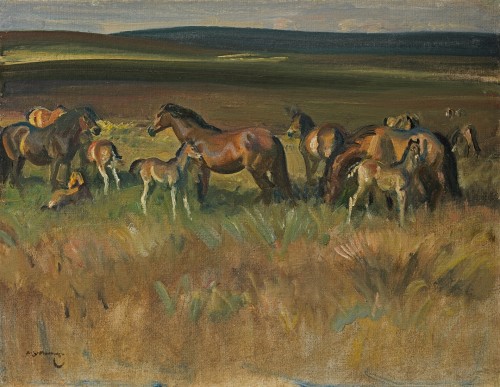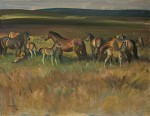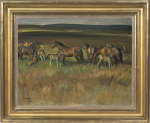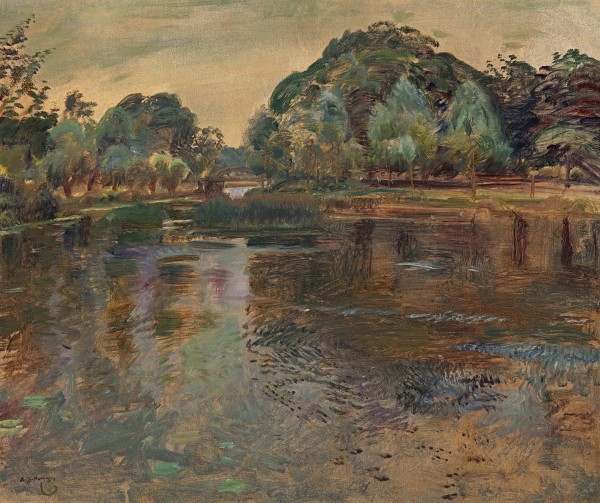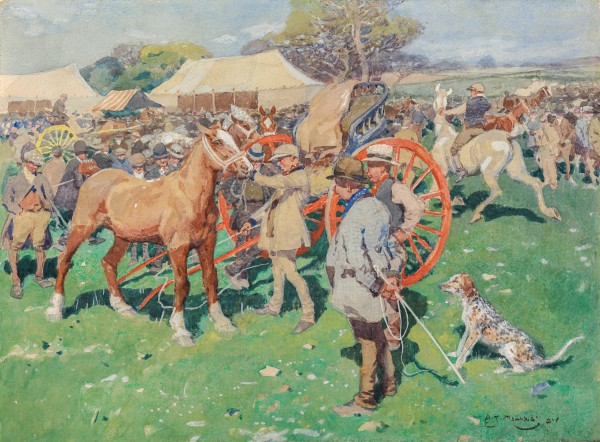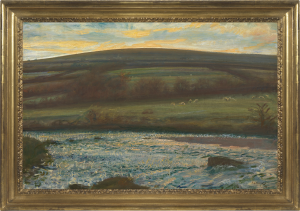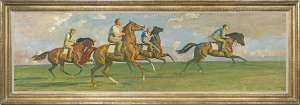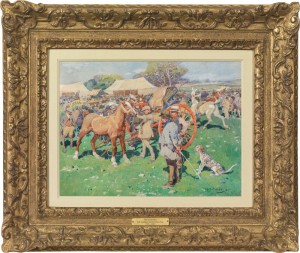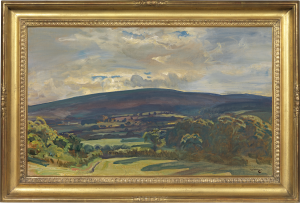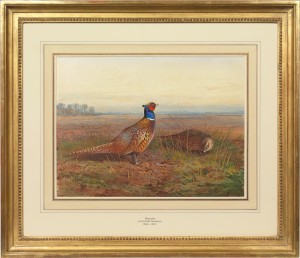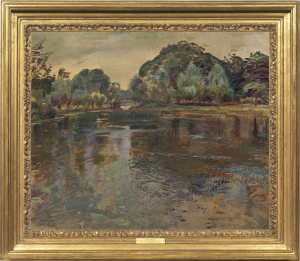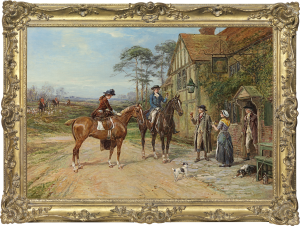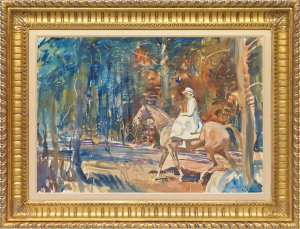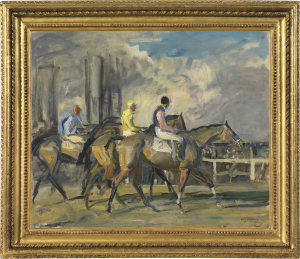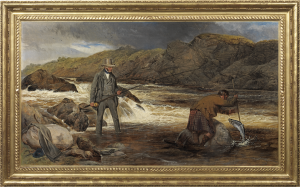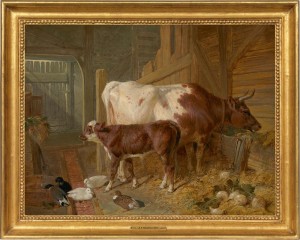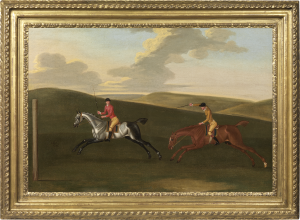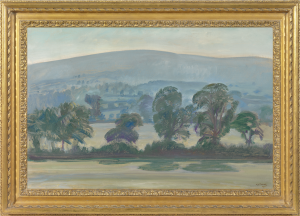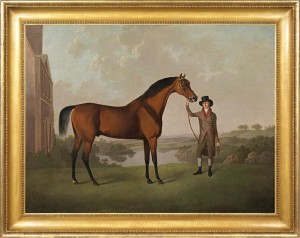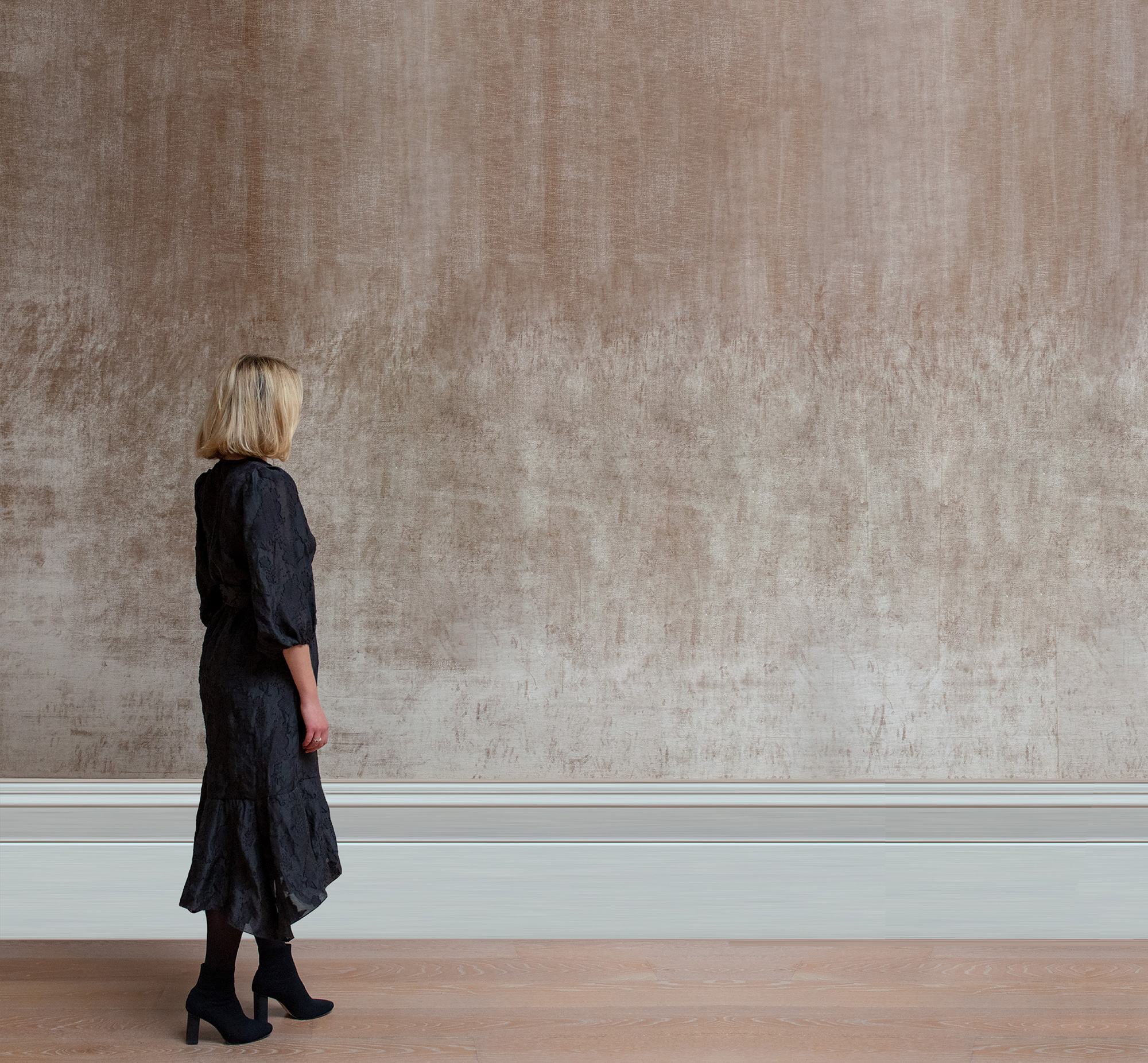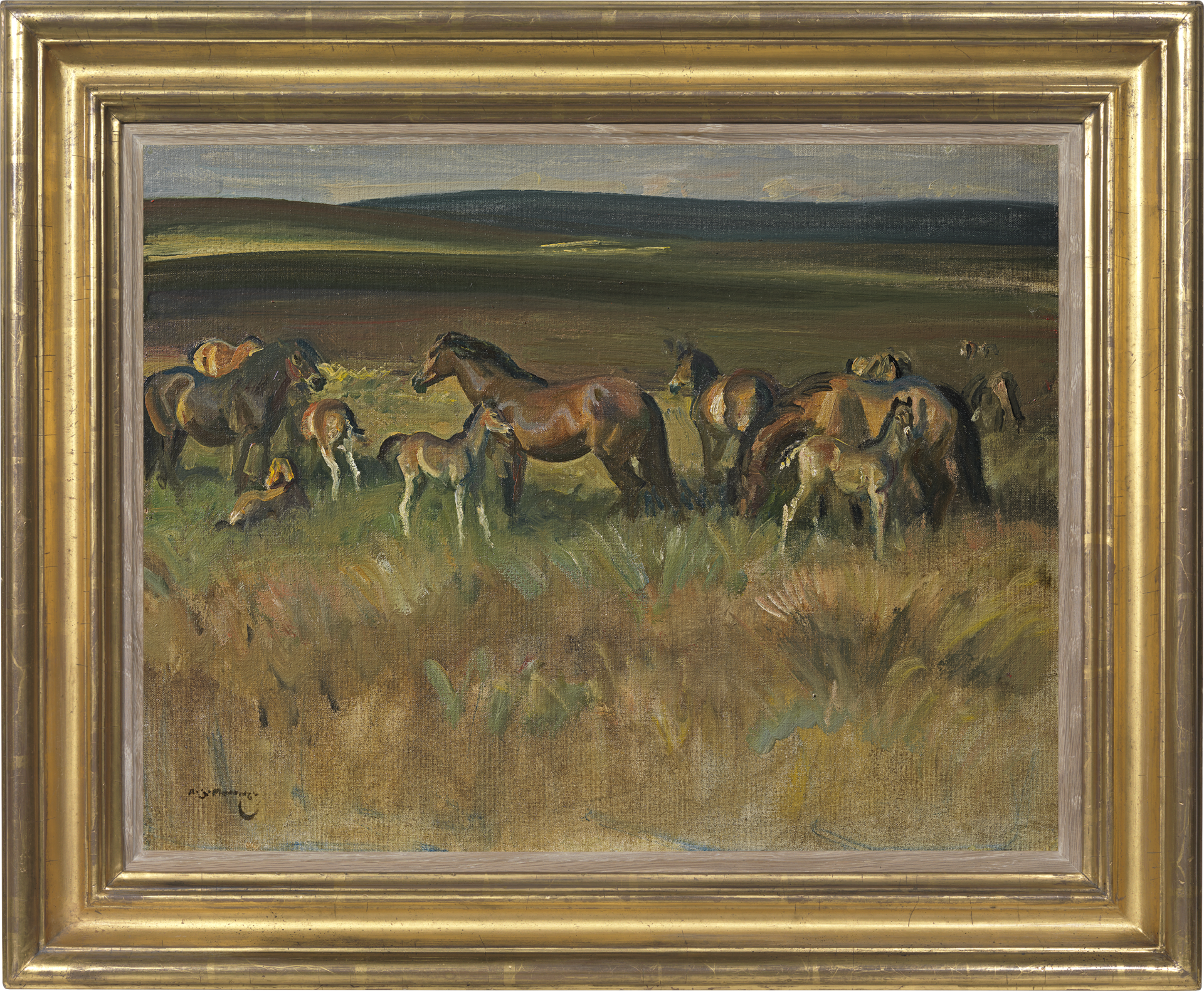Sir Alfred Munnings
Ponies on Withypool Common, Exmoor
Oil on board: 14.3 x 18.1 (in) / 36.2 x 46 (cm)
Signed lower left: A.J. Munnings; signed and inscribed on the reverse
This artwork is for sale.
Please contact us on: +44 (0)20 7493 3939.
Email us
SIR ALFRED MUNNINGS
Mendham 1878 - 1959 Dedham
Ref: CA 149
Ponies on Withypool Common, Exmoor
Signed lower left: A.J. Munnings;
signed and inscribed on the reverse: Ponies on Withypool common / Exmoor / This picture was bought with /a painting of Weir Water, Oare / by Willoughby Hancock Esq / which I gave in aid of the Red X /at Exford Navy Week 1942 / AJ.Munnings RA / Withypool
Oil on board: 14 ¼ x 18 1/8 in / 36.2 x 46 cm
Frame size: 18 ¾ x 22 ¾ in / 47.6 x 57.8 cm
In an English gilded style hollow frame. Painted circa 1942
Provenance:
Given by the artist to Exford Navy Week, 1942, in aid of the Red Cross;
where bought by F Willoughby Hancock, Abbotsfield, Wiveliscombe, Somerset and owned until at least 1956
Dr Robert Taylor, UK;
by inheritance in 2015 to a private collection, UK
Exhibited:
London, Royal Academy, Diploma Gallery, Exhibition of Works by Sir Alfred Munnings, KCVO, PPRA, 1956, no.92 (as Exmoor Ponies; lent by F Willoughby Hancock)
Alfred Munnings’s second wife, the brilliant equestrienne Violet McBride, owned a hunting box at Withypool in Somerset from the 1920s. For Munnings, increasingly in demand as a Society equestrian portraitist and racing painter, visits to the West Country were a blessed escape, where he could indulge his delight in landscape and the animals which wandered freely over the moorland. Munnings wrote: ‘Ponies on the moor – I always wanted to paint them. Wild ponies wandering free over thousands of acres of wide, undulating expanse….Imagine an April day; the moors a patterned harmony of buff and brown….A stationary group of ponies against the sky, others lower down the slope, their foals lying basking in the sun, whisking curly tails’[1].
Munnings spent much of the Second World War at Withypool after his main home, Castle House, Dedham in Essex, was requisitioned by the Army. The privations of wartime were ameliorated by the leisure to capture these beautiful, semi-wild horses, wandering the moors as their ancestors had done on grassland since time immemorial. The difficulty was to track down the ponies on the vast terrain. Munnings equipped himself with a ‘pony-painting outfit, a strong fishing-bag, bought from Mr. Burgess at South Molton’[2], containing ‘my pochard painting-box, a carrier in which I could slide six wet panels, a cardboard box filled with small paint-tubes, bottles of turps, oil and copal varnish’[3]. He would ride out with his groom Harry Bayfield until they found the herd, then sent Bayfield off with his own horse, to return at 5pm when the painting day was done. ‘Standing there alone, two or three suspicious mares would stare at me, ready to trot off, whilst I pretended to look the other way, and walked nearer to them backwards. Then, sitting down, getting my pochard palette set, with a small selection of colour, and brushes in hand, I would wait awhile. At last, the mothers, seeing I was harmless, resumed grazing, whilst I stood up, crept nearer and began to work….Some of those small sketches, done in an hour, had a completeness and look of truth about them that one would never attain on a larger size’[4].
This painting was donated by Munnings in 1942 to Exford Navy Week to raise funds for the Red Cross and bought by his friend F Willoughby Hancock of Abbotsfield, Wiveliscombe. Munnings painted a portrait of Miss Rosemary Hancock, a study for which, Miss Hancock seated smoking with a dog in an interior, is in the Munnings Art Museum, Dedham[5].
SIR ALFRED MUNNINGS, PRA, RWS
Mendham 1878 - 1959 Dedham
Born in Mendham, Suffolk, Alfred Munnings was the son of a miller. He was apprenticed to a firm of lithographers from 1893 to 1898 and studied at the Norwich School of Art and in Paris. There he was impressed with plein-air naturalism; this, together with his introduction to the racecourse in 1899, influenced the themes for which he became famous.
While in Mendham, Munnings painted many scenes of country life, particularly horse fairs. He went to Cornwall in 1911, and for many years was an important addition to the Newlyn School of artists. When the First World War broke out, Munnings enlisted, despite having the use of only one eye owing to an accident in 1899. He became an army horse trainer near Reading and later went to France as an official war artist, attached to the Canadian Cavalry Brigade.
The year 1919 was a major turning-point in all aspects of Munnings’s life; he painted his first racehorse, Pothlyn, the winner of the Grand National, and became an Associate of the Royal Academy. He met Violet McBride, whom he was to marry, and bought Castle House, Dedham, where the Munnings Memorial Trust maintains a permanent exhibition of his pictures. Munnings’s prolific career, spanning over sixty years, brought him honour, with election to the Presidency of the Royal Academy in 1944, a Knighthood in 1945, and a personal award from the Sovereign in 1947, when he was created Knight of the Royal Victorian Order.
[1] Sir Alfred Munnings, The Finish, London 1952, p.108.
[2] Op. cit., p.108.
[3] Ibid., p.109.
[4] Ibid., p.110.
[5] Munnings also dedicated a Frost & Reed print of his painting Summer evening, Cliveden ‘To my friend, Willoughby Hancock Esq, Abbot of Abbotsfield’.

